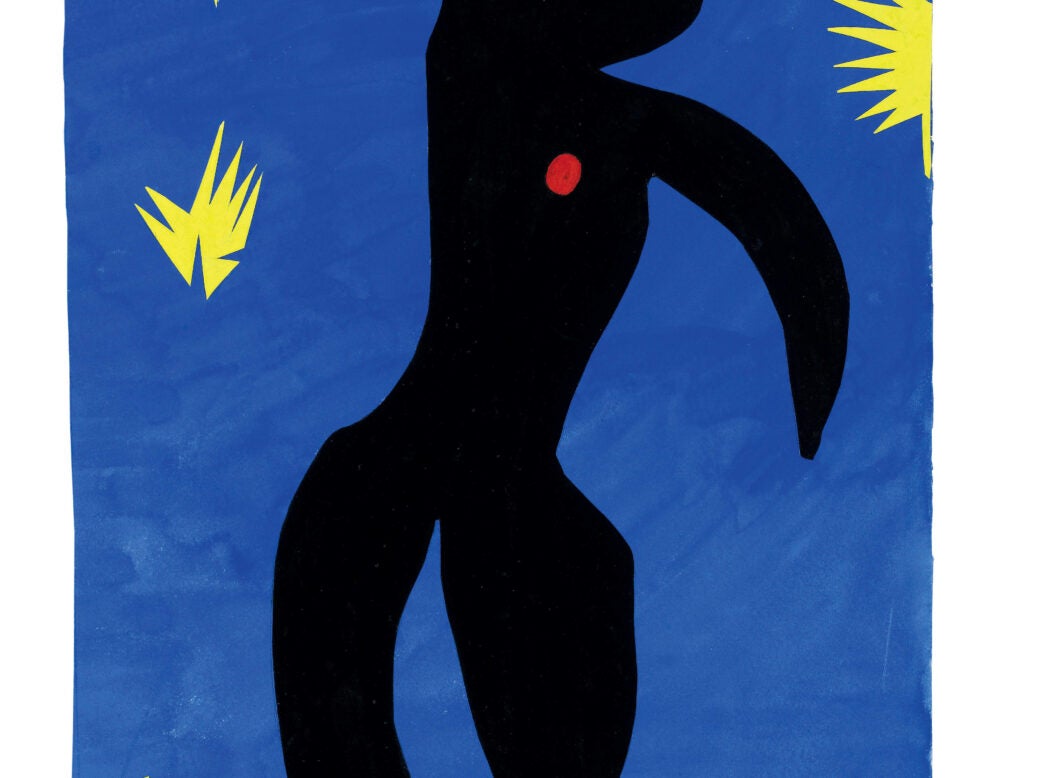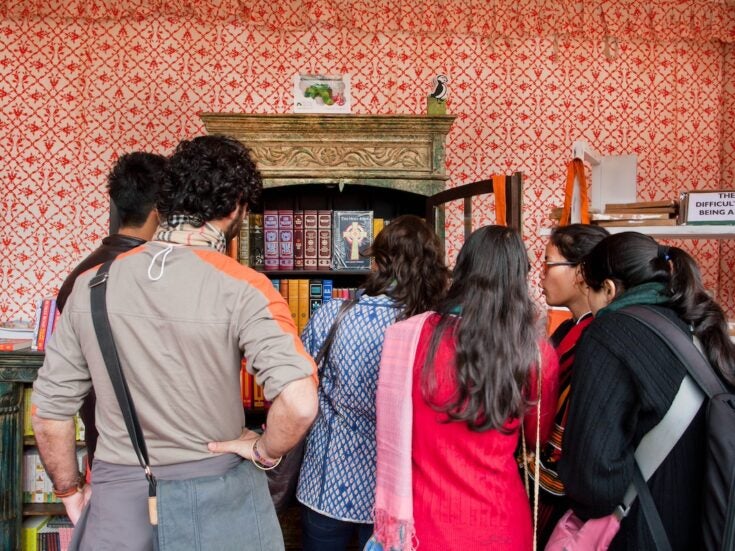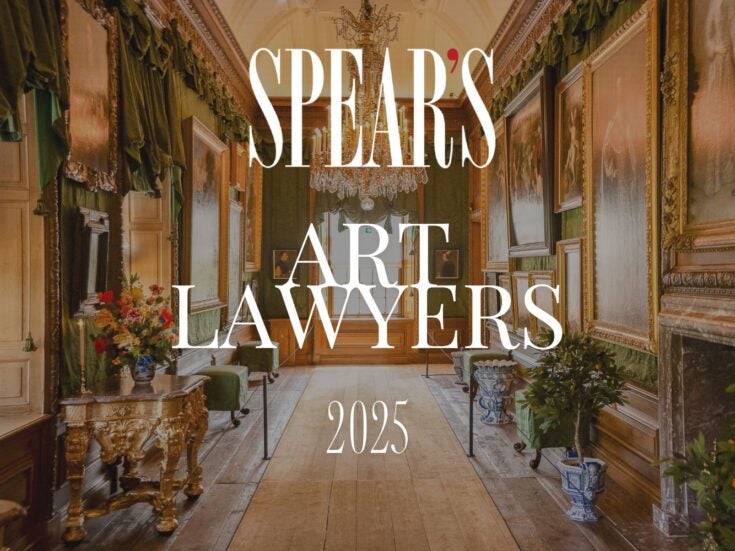
There is much to gain by seeing these pieces in the flesh, as not only are they a whirling carousel for the modernist project but they are vibrant and joyful displays of colour and vision in their own right, says Alex Matchett
Henri Matisse’s exhibition has been much touted, highlighted by the iconic falling Icarus amid a starry sky, but are these cut-out artworks really worth a visit in the flesh?
The Tate Modern enjoyed the serendipity of discovering that the Museum of Modern Art in New York was also looking to pull together Matisse’s later catalogue for a major exhibition, and their subsequent joining of forces has yielded impressive results. The exhibition is as much about untrammelled expression as visual impact; although sadly avariciously overpriced at ’18 for an adult ticket.
Much of Matisse’s later life was spent confined in his studio and bedroom following a major operation in 1941, so as a result his cut-outs blossomed from small, intricate pieces into full blown walls of colour, pattern and movement. This organic growth of the art and artist resulted in a new and exciting medium, entirely of his own creation, which has been realised with aplomb in the Tate Modern’s spacious gallery.
Read more on art and collecting from Spear’s
Tate director Nicholas Serota has rightly enthused on Matisse’s economy and perspective. There is much to gain by seeing these pieces in the flesh, as not only are they a whirling carousel for the modernist project but they are vibrant and joyful displays of colour and vision in their own right. They entice the imagination and spoil the inner child with a freedom truly realised through this medium.

Pictured above: Icarus 1946
The first room juxtaposes Matisse’s painting Still Life With Shell (1940) with the cut-out work of the same name, demonstrating his method, which was initially demanded by circumstance as Matisse increasingly struggled with the physicality of brushwork, and then later realised by the vivid freedom found in this brave new world.
The story of ‘Jazz’, a series of plates undertaken in the mid 1940s, plays out in room three and the journey is truly underway. If the staccato pins used to hold ‘Two Dancers’ (1937-8) together in motion are a poignant reminder of the artist’s own limitations and physical frailty, then the dialogue enshrined in ‘Jazz’ (not Matisse’s title but an apt expression) shows the roaring illumination of an inspired mind.

Pictured above: Blue Nude II spring 1952
The modernist positioning of function and role of The Cowboy (1943), The Sword Swallower (1943), The Knife Thrower (1943-4), The Swimmer in the Tank (1944) blends with the abstract of The Codomas (1943), Forms (1944) and Destiny (1944). It’s a colourful haze of memory evocative of Parisian circuses, fairs and the toys of thought kept in childhood’s attic. Icarus’ (1943-4) powerless dancing parallels a birdlike beauty; not made for flight he maintains an ethereal quality framed in an impressionist’s sky.
The exhibition is astutely crafted with the positioning of nineteen pieces from Matisse’s Vence studio in a collage epitomising a submarine world, referenced by the panoramic movement of Oceania-The Sky (1946).
A film of Matisse’s creative process reveals a mesmeric, almost therapeutic engagement with the paper from which he created so much and which is ultimately rendered in the following room: Vence – The Chapel, depicting ‘The result of my active life’. Here, in contrast to the previous works, there is a more orchestrated imagery inside the religious crucible but reinterpretation is not absent as shown by the Celestial Jerusalem (1948) window design.

Pictured above: Creole Dancer 1950
The exhibition chooses to hinge on the Tate’s ‘The Snail’ (1953) and MoMA’s equally impressive ‘Memory of Oceania’ (1952-3). They are justified touchstones showing both the vision and the off-key beauty Matisse achieved with such simple tools. ‘The Snail’ is iconic and carries so much in its conjunction of the abstract and the image that it’s hard to imagine the Tate Modern without it, let alone the Cut-Outs exhibition.
’Memory of Oceania’ is equally dynamic, a trumpet for the modern, reminiscent of Kandinsky, but firmly grounded in Matisse’s universe, testimony to the wealth of art he pioneered. Combined, they make a compelling centre of gravity that draws the exhibition to a close and anchors its authority.
While these are solid pillars upon which to build any modernist monument there are other beacons that turn this examination into a celebration – notably, the long awaited bringing together of the four Blue Nudes (1952) inside the UK for the first time, embodying the medium, they hover closest to Matisse’s paintings before standing clear. Made by ‘cutting into colour’, they achieve a soft totem of the female form via a triumph of simplicity Picasso would have been proud of.

Pictured above: The Snail 1953
Other jewels are found in the balance of colour, depth and movement of Creole Dancer (1950) and Zulma (1950). The former’s playfulness sits perfectly beside the latter’s more staid elegance; they are towering pieces that make us grateful Matisse put down his palette, undimmed and empowered by his new medium.
If there are drawbacks it’s the reluctance of the exhibition to provide backgrounds and reference points, however this is quantified by the breathing space achieved for works which are creatively framed by the space throughout, allowing the wallpaper sized Large Decoration with Masks (1953) (made a year before he died and almost 10m long) and The Parakeet and the Mermaid (1952) to bear very visual fruit.
The gallery is utilised without obtrusive or patronising stage direction and its audience has plenty of room to enjoy these pieces, which themselves are passionate dances of freedom.
There is a joy to this collection. It dances not for the meaning behind interpretations of impressionism, modernism, cubism or any other prods of the shepherd’s crook but because, as with all good art, it has escaped its own narrative and gives us an ever relevant beauty well celebrated by this liberating exhibition.
Henri Matisse: The Cut-Outs opens on the 17 April at the Tate Modern in London







